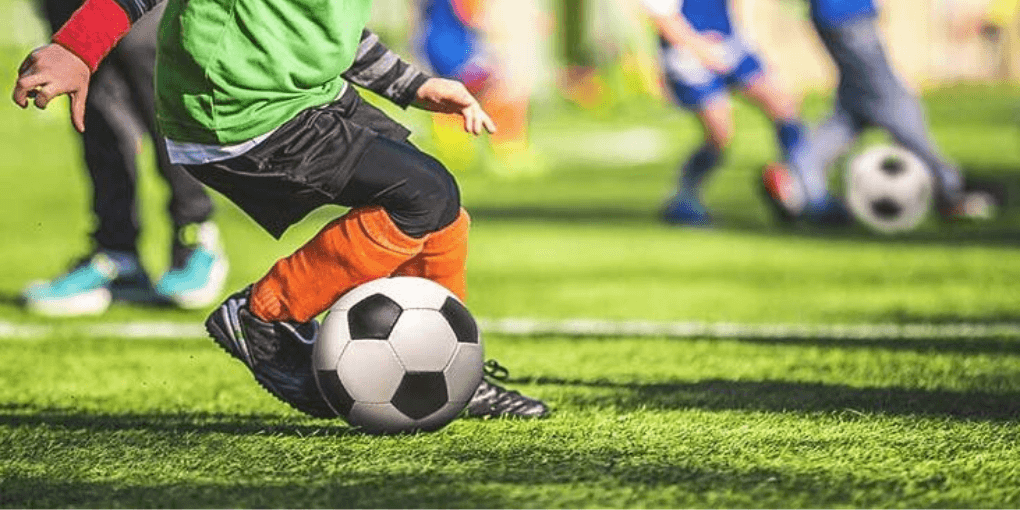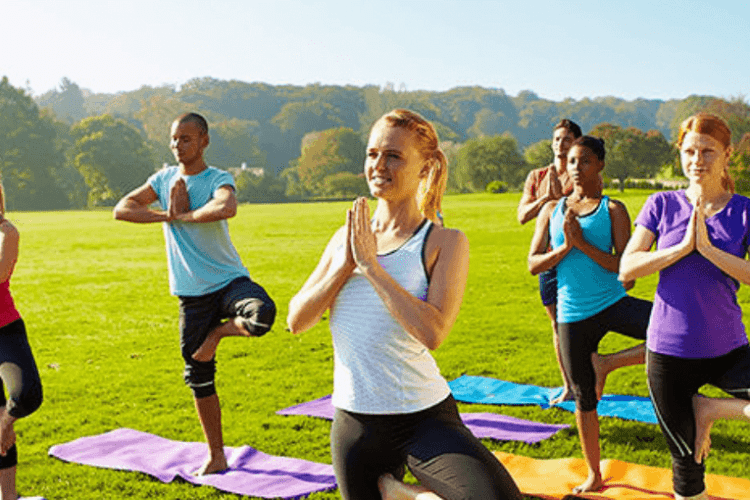Soccer Cleats for Youth Players: Support for Growing Feet
Have you ever wondered what makes a great soccer player? It’s not only skill and passion but also the right gear, especially when it comes to your feet.

Being a soccer fan, I know how crucial it is to wear cleats that offer comfort and support for growing feet.
In this blog post, I’ll explore everything you need to know about soccer cleats for youth players.
Did you know that wearing ill-fitting cleats can increase the risk of foot injuries by 40%? That’s why choosing the right soccer cleats is crucial for young players like you.
Soccer legend Mia Hamm once said, ‘The most important thing is to wear good-quality cleats to support your feet.’
As your feet grow, you should have comfortable cleats that make you play better.
Now, lace up your cleats and prepare to step onto the field confidently and comfortably!
Why Do Proper Soccer Cleats Matter for Young Players?
Let’s explore the importance of proper soccer cleats for youth players:
- Comfortable Fit: Soccer cleats that fit well prevent blisters and discomfort while playing. When your shoes fit right, you can focus on the game without distractions.
- Support for Growing Feet: Properly fitting cleats provide support for your growing feet and help prevent injuries. They keep your feet stable and reduce the risk of twists or strains.
- Improved Performance: The right cleats can enhance your speed, agility, and control on the field. Also, good traction helps you move confidently and make quick turns.
- Injury Prevention: Ill-fitting cleats can lead to foot injuries like sprains or blisters. Proper cleats protect your feet and ankles during intense movements.
- Confidence Boost: Wearing comfortable and supportive cleats boosts your confidence in your abilities. So, you can play without worrying about discomfort or slipping.
- Long-Term Foot Health: Choosing quality cleats promotes healthy foot development over time. Your feet need proper support during sports to avoid issues later.
- Focus on Fun: When you have the right gear, you can enjoy playing soccer without worrying about your feet. Comfortable cleats can add to the enjoyment and excitement of the game for you.
Importance of Understanding Youth Foot Development for Soccer Cleats
Coach David Beckham once said that understanding how a youth’s foot grows matters when selecting the right cleats for better performance.
By considering these factors, you can enjoy playing soccer while keeping your feet healthy and happy.
- Growing Feet: Your feet grow and change rapidly, especially during early childhood and adolescence. So, your soccer cleats should allow room for this growth to ensure a proper fit.
- Arch Support: You may have developing arches that need good support from your cleats. Proper arch support helps prevent discomfort and promotes healthy foot development.
- Toe Room: Cleats should have enough room in the toe area for your toes to wiggle comfortably. This prevents cramped toes and potential foot problems.
- Ankle Stability: You need cleats that provide stability around the ankles to prevent injuries. Supportive cleats reduce the risk of twists or sprains during games.
- Flexibility: Your cleats should be flexible enough to allow natural foot movement. So, you can run and kick easily. This flexibility also enhances agility and performance on the soccer field.
- Cushioning: Cushioned insoles or padding in cleats provide added comfort and shock absorption. They protect your feet from impact during intense play.
- Breathability: Good airflow in cleats keeps your feet dry and prevents sweat-related discomfort. Breathable materials also reduce the risk of odors and infections. So, it ensures your feet stay safe while you’re playing.
- Impact of Sports Activities: Soccer involves dynamic movements like running, jumping, and kicking. It can put stress on your feet. Cleats with specific features support these movements and reduce strain.
Key Features to Look for in Soccer Cleats for Youth Players
By prioritizing these key features, you can have comfortable cleats to protect your growing feet.
Lightweight Construction
Lighter cleats help you move faster and with more agility on the field. They reduce fatigue and allow you to make quick changes in direction during games.
Cushioning and Padding
Cleats with cushioned insoles or padding provide comfort and shock absorption. This protects your feet from impact and reduces the risk of discomfort or injuries.
Flexible Sole
Cleats with flexible soles allow you to move your foot naturally. So, you can easily run and kick the ball during games. They also enhance agility and control during play without restricting foot motion.
Supportive Structure
You should look for cleats with a supportive structure around the heel and ankle. This stability prevents twists or strains and promotes proper foot alignment.
Breathable Materials
Cleats made from breathable materials keep your feet cool and dry during games. Good ventilation reduces sweat buildup and minimizes odors from your feet.
Proper Fit
You must ensure that your cleats fit snugly but comfortably on your foot. So, there should be enough room for your toes to wiggle. A proper fit prevents blisters, rubbing, and discomfort while playing.
Traction and Stud Configuration
Cleats with a solid traction pattern and well-placed studs provide stability on various playing fields. They help prevent slipping and sliding. So, you can move confidently on the field.
Durability
You must choose cleats made from durable materials. So, it can withstand regular use and rough playing conditions. Quality construction ensures cleats last longer and provides consistent performance during games.
Choosing the Right Size and Fit of Soccer Cleats for Youth
By following these tips, you can choose soccer cleats that support your growing feet effectively:
- Measure Feet: You can use a measuring tool to measure the length and width of both of your feet. This ensures an accurate assessment of foot size for choosing the right cleats.
- Consider Growth Room: You should choose cleats that leave about a thumb’s width of space at the front of the toes. This allows room for growth without compromising comfort or performance.
- Try with Soccer Socks: You can wear soccer socks when trying on cleats to ensure a proper fit. Socks add thickness, so it’s important to consider this when you select cleats for you.
- Check for Snugness: Your cleats should fit snugly around the foot without feeling too tight or loose. A snug fit prevents slippage and provides you with better control during play.
- Walk and Move: You must walk around and move in the cleats to check for comfort and flexibility. Ensure there are no areas of rubbing or discomfort that could cause blisters.
- Test with Ball: You should practice kicking a soccer ball while wearing the cleats. It’ll help you assess comfort and control. Your cleats should allow for natural foot movements and provide a good grip on the ball.
- Avoid Tight Cleats: You should avoid cleats that feel overly tight or restrict toe movement. Tight cleats can cause discomfort and may hinder your performance on the field.
- Consider Width Options: Some cleats are available in different width options to fit different foot shapes. So, choose the width that best suits your foot for a comfortable fit.
Learn the Sports Injury Prevention Tips for Young Soccer Players
Alex Ferguson said that injury prevention starts with learning safe sports practices and training techniques.
Let’s explore some injury-prevention tips for soccer cleats for youth together:
Warm-Up Routine
You should always start with a proper warm-up before playing soccer. It’ll prepare your muscles and prevent injuries. So, you can do dynamic stretches and high knees to improve flexibility and reduce strain.
Use Proper Technique
You should learn and practice proper soccer techniques for dribbling, passing, and shooting. It reduces the risk of overuse injuries and improves your performance.
Wear Protective Gear
You must wear shin guards to protect your shins from impact during games. Shin guards reduce the risk of bruises and more serious injuries, like fractures. So, you can play safely without worrying about getting hurt.
Stay Hydrated
Dehydration can lead to muscle cramps and fatigue. It increases the risk of injuries. So, you must drink plenty of water before, during, and after playing soccer. It’ll keep you hydrated.
Rest and Recovery
Give your body breaks between games and practices to avoid getting hurt from doing too much. Proper rest helps muscles recover and reduces the risk of strains or sprains.
Listen to Your Body
You should pay attention to any signs of pain or discomfort during soccer activities. If you feel pain that won’t go away, get help from a doctor.
Maintain Fitness
Stay physically fit with regular exercise and conditioning outside of soccer practice. Strong muscles and good fitness reduce the risk of injuries on the field.
Follow Coach’s Instructions
Coaches provide valuable guidance to help prevent injuries during training and games. So, you must follow your coach’s instructions on proper techniques and safety guidelines.
Advice for Breaking in New Soccer Cleats for Youth
By following these tips, you can break in your new cleats comfortably:
- Start Slowly: You can start by wearing your new cleats for a few minutes. For example, during practice or easy training sessions. Then, gradually increase the duration of wear as the cleats start to feel more comfortable.
- Wear Thick Socks: You can use thick soccer socks when breaking in new cleats. It’ll give cushion to the feet and reduce friction. Thick socks also help prevent blisters and discomfort during the breaking-in process.
- Use Blister Prevention Products: You can also apply blister prevention products while trying your cleats. For example, moleskin pads or blister cushions. These products create a barrier between the skin and the cleats by reducing the risk of blisters.
- Flex and Bend: You should flex and bend the cleats with your hands before wearing them. It’ll soften the materials and improve their flexibility. This makes the cleats more comfortable and less stiff when worn on the field.
- Walk Around: You can wear the new cleats around the house or during casual activities to get used to the feel and fit. Walking in the cleats helps break them in gradually and allows adjustments for comfort.
- Listen to Your Feet: You must pay attention to any signs of discomfort or rubbing while breaking in new cleats. Stop wearing them if you feel any pain or irritation to avoid potential injuries.
- Be Patient: Breaking into new cleats takes time. So, you need to be patient and allow your feet to adjust gradually. Rushing the process can lead to discomfort and may affect performance on the field.
Conclusion
In conclusion, soccer cleats for youth players play a crucial role in ensuring comfort and support for growing feet.
Cleats that fit well, provide proper cushioning and support your feet during games.
So, it’s essential to focus on your foot health by wearing the right cleats and taking care of them.
You should take the time to break in new cleats and follow sports injury prevention tips to stay safe on the field.
So, lace up your cleats and enjoy the beautiful game of soccer while keeping your feet happy and healthy!
FAQs
If your cleats fit snugly around your feet, then this is the one for you. There should be a little room at the front for your toes to move comfortably.
It's best to wear soccer socks with your cleats. It'll give you extra comfort and cushioning. It'll also help to prevent blisters.
With a damp cloth, you can wipe off dirt and mud from your cleats after each game or practice. You should avoid soaking them in water or using harsh chemicals.
Soccer cleats are available at sports stores, online retailers, and specialty soccer shops. Before buying, make sure to try them on and test the fit.


